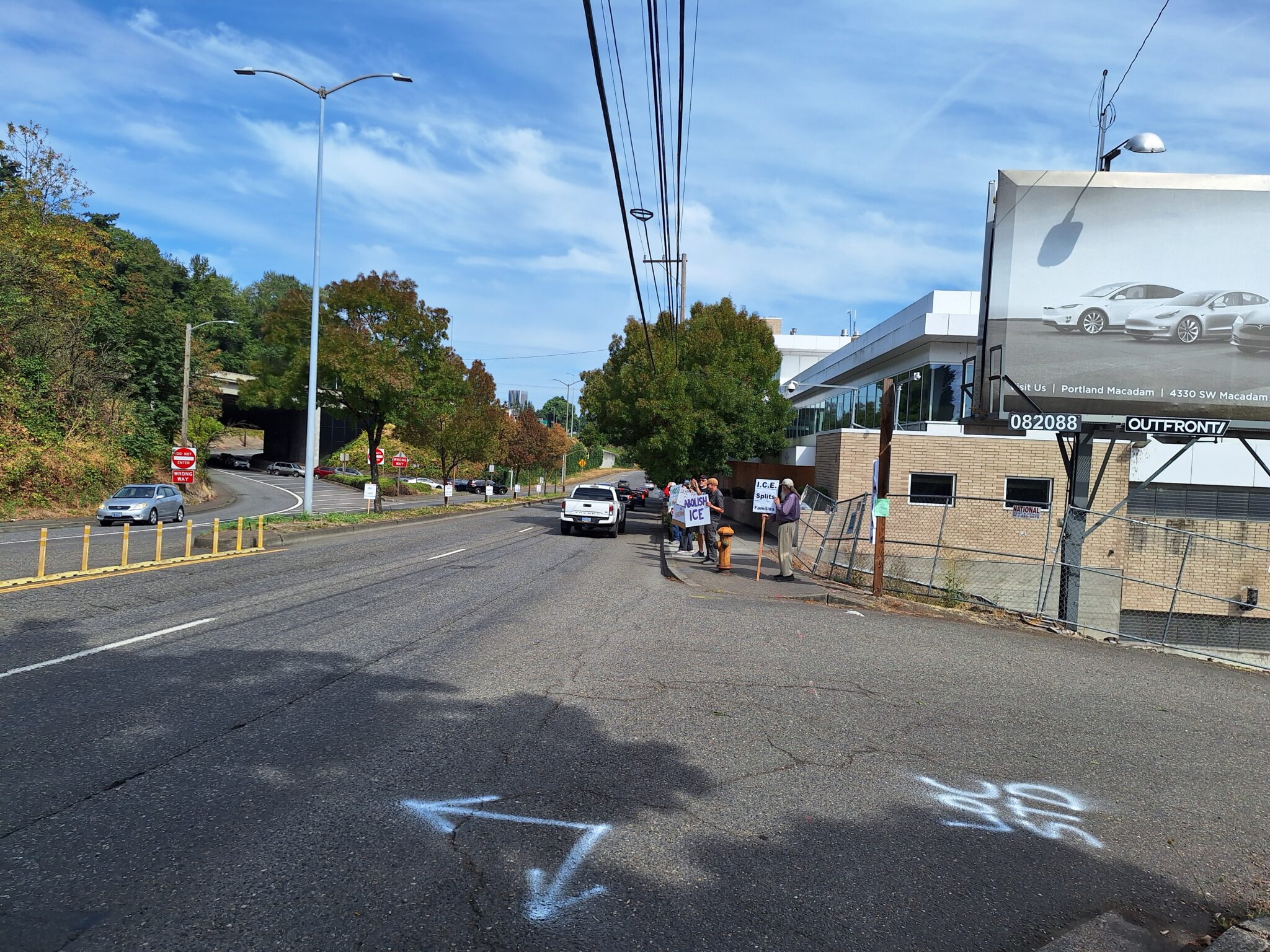PORTLAND, Ore. – The Immigration and Customs Enforcement (ICE) office on Macadam Road, just south of downtown, has become one of Portland’s most recognizable and controversial landmarks. From the outside, it sometimes resembles a tourist attraction. Crowds gather regularly, but the reality is far from sightseeing—most of those outside are protesters.
A Building That Stands Out
The ICE building is set in a light industrial district between the South Waterfront and Johns Landing. Architecturally unremarkable, it nevertheless stands out for three reasons:
-
Plywood-covered surfaces replace glass or plastic, giving it the appearance of a shuttered structure.
Also Read
-
Heavy fencing cordons off much of the property.
-
Graffiti, often graphic and critical of ICE and the Trump administration, coats the lower walls.
The only reliable entry appears to be a gated driveway on a side street, where immigrants often arrive for check-ins. Protesters say many who enter never re-emerge through that door, heightening tensions around the site.
National Spotlight, Local Reality
Clashes outside the building occasionally make headlines and appear in video clips that suggest Portland is engulfed in chaos. Former President Donald Trump recently cited the protests while again raising the possibility of sending National Guard troops to the city.
Yet beyond the ICE facility, Portland’s streets look largely calm and prosperous. Downtown, just two miles north, shows little sign of unrest. Unlike in 2020—when federal agents filled neighborhoods with tear gas—the current demonstrations remain confined to the ICE block.
Nearby businesses have taken precautions. A sign on one office building pleads: “Please do not vandalize. We are a nonprofit. We are not associated with the ICE building.” So far, that building and most others nearby remain untouched.
Protesters by Day and Night
What makes the ICE site unusual is not just the presence of protesters but the variety of groups that cycle through.
-
Daytime Demonstrations: Since January, an interdenominational religious coalition—organized partly by Quakers—has gathered Monday mornings. These are typically quiet, peaceful protests marked by seniors holding signs while cars honk in support. Their ranks can reach 30 people, with a mailing list of 60. By midday, other groups, including Buddhist organizations, often take their place.
-
Nighttime Activity: After dark, the scene changes. A smaller, more confrontational group—described by daytime demonstrators as “rowdies”—appears. These protesters are noisier, leave graffiti, and sometimes throw objects. In response, ICE officers occasionally emerge with tear gas. Numbers remain modest, usually fewer than two dozen.
The split has created unease. “We don’t need a lot of federal troops for 15 or 20 people,” said Joe Snyder, a daytime protester from Portland.
Minimal Interaction, Occasional Tension
Despite constant presence outside, there is little direct contact between protesters and ICE staff. For the most part, the two groups exist in parallel, divided by fences and suspicion. Volunteers on the sidewalk sometimes offer information to immigrants arriving for check-ins, but interactions with federal officers are rare.
Still, flashpoints occur. Snyder recalled one day when ICE officers stood on the building’s roof while both peaceful and rowdy protesters occupied the street. Tensions escalated until religious protesters began singing and walking together. The shift diffused the atmosphere, leading both officers and rowdy demonstrators to step back.
A Routine With Fragile Boundaries
Protests at the ICE facility have become a fixture in Portland life—predictable yet volatile. Most days bring nothing more than peaceful chants and signs. Nights occasionally bring confrontation. And though Trump’s warnings of citywide chaos paint a grim picture, the unrest remains limited in scope.
The ICE building, with its boarded windows and layers of graffiti, stands as both symbol and stage. Whether the divide between protesters and federal agents can be bridged remains uncertain. But as Snyder noted, moments of calm suggest that the solution lies less in force than in finding common humanity—even on one of Portland’s most contested blocks.












